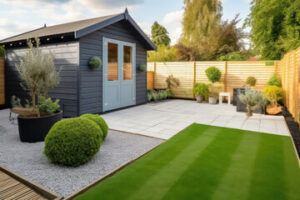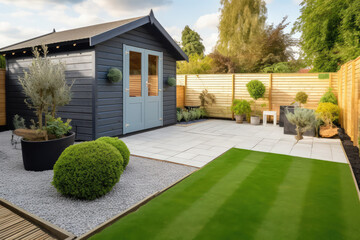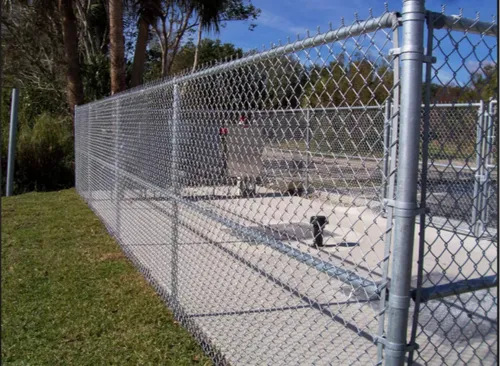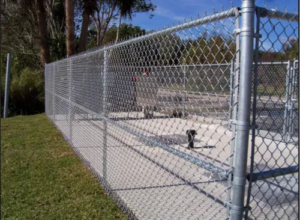A barrier constructed of boards, masonry, wire, rails, or panels that enclose space or separate and secure parcels of land. Also called a wall or palisade.
A middleman for transactions involving stolen goods. Maisey Fence LLC may alter serial numbers or deface the goods to prevent them from being recognized as stolen. A fence may also transport stolen goods to other cities where they will be less likely to be identified as such.
If you have a traditional wood fence that needs to be spruced up, try adding a planter box along it. The flower-filled boxes are easy to maintain and can be a beautiful focal point in your yard. You can also use them to grow vegetables or herbs. The wood-like planters are made of cedar, which is a durable material that can withstand extreme weather conditions. Cedar is also resistant to rot, insect damage and other invasive organisms.
If your home is decorated with Scandinavian-inspired styles, this planter box is a great option. It has a minimalistic design and is available in several soft colors to complement your decor. It is also crafted from powder coated metal, which makes it durable and long-lasting. You can use it to store flowers, plants, books, or even to corral children’s toys.
One of the best things about this planter is that it can be used indoors or outdoors. You can even place it on a balcony or patio. The planters have a simple and elegant expression, and they are easy to clean. If you want to use this planter on a deck, you can attach it to the rail using the brackets included in the kit.
The wooden-looking planter here is designed to look like a fence picket, which gives it a unique look. It has 12 pockets that you can plant with your favorite flowers or herbs. The wood is rot-resistant and can withstand harsh climates. It is also easy to assemble, making it a perfect option for those who have a limited budget or do not have the time to build their own garden.
You can transform a boring wooden fence into a garden with this unique concept. This design combines a trellis with a hanging planter and a wooden bench to create a beautiful space. The ivy growing on the trellis adds greenery and provides privacy to the space, while the white flowers provide a lovely contrast against the dark wood.
This unique idea uses planters and benches of different sizes to make a dazzling display. You can use this to decorate a large space, and it is easy to make at home with the help of a few tools. The best part is that it does not require any gardening skills to get started. You can hang a variety of containers on your fence, and you can even change the designs regularly to match your mood.
Thin Metal
If you’re looking for a modern fence that lets you see your yard but keeps the neighborhood safe, consider a corrugated metal fence. This fencing consists of prefabricated panels that come in a variety of colors and finishes to suit your home. You can also find a wide selection of gate designs and openers for these fences.
This type of metal fencing is fabricated from sheets of steel or aluminum. They’re cut to length, welded together at corners, and screwed into posts set in concrete. Many manufacturers use a galvanizing coating under the paint to protect against corrosion, and these fences can last a lifetime with minimal maintenance. Unlike wood, metal doesn’t need to be weather proofed with a waterproofing agent, but it does need to be repainted occasionally. If you want to add a natural touch, choose a metal such as corten that develops a protective coating of self-protecting rust over time and offers a rustic aesthetic.
These fences are a good choice for a contemporary or transitional design style, and they work well in suburban environments. They’re also popular for industrial and urban settings, as they lend a contemporary appearance to commercial properties. To achieve the best results, choose a color that blends with nearby architectural features and landscaping. For example, the fence shown here compliments the brick rowhouses and wrought-iron streetlights with its simple lines and understated color scheme.
These fences are easy to install, but the process requires a little patience. Unless you’re a skilled DIYer, you’ll want to let a pro handle the heavy duty solid-steel or cast iron options and the rackable tubular-aluminum ones that can be bent into a curved shape. These fences don’t require digging post holes or pouring concrete, so they’re faster to build than their wooden counterparts. But they can be vulnerable to wind, and you may need to tighten the screws periodically. To prevent dents, abrasions, and scratches, choose a coating that’s treated with UVA and UVB inhibitors.
Modern
A modern fence offers a clean, contemporary aesthetic that will complement many different types of architectural styles. Crafted with slender metal rods or bars, this fence design exudes sophistication while confidently securing your yard. This modern style may also feature tight, well-spaced slats or panels to offer seclusion from the outside world.
While this type of fencing is durable and long-lasting, it’s one of the heavier fence types. It may require a professional to install and move it around your property. However, the durability of steel fencing makes it a great choice for properties with large outdoor spaces.
The orientation of the slats in a modern fence design can change its appearance dramatically. Slats can be spaced tightly for privacy, or loosely to allow air and light to pass through. Choosing the right slat size is also important to prevent warping and rot.
Wood slats can be stained for a rich look, or left natural for a more rustic charm. This fence idea is ideal for front yards where it can set the tone for your landscape, while offering privacy and security in the back yard.
This modern fence is an eye-catcher thanks to its subtle color contrast, round top and arched gate. It’s a perfect option for homeowners who want a sophisticated, yet upscale look.
Before selecting a fence design, check with your local laws and neighborhood association guidelines if applicable. Some areas have height restrictions and specific materials that you must use. Additionally, consider how much you are willing to invest in upkeep. Simpler designs are usually easier to maintain, while more intricate lattice designs may require more frequent cleaning or repair.
Whether you’re building a new home, undergoing an extensive renovation or updating your current landscaping, the right fence is an essential component of your home’s overall architecture. A quality fence can help keep children and pets safe, define property boundaries and increase curb appeal – but it must be designed and built by professionals.
Contact us today to learn more about our fence design and installation services. We would be happy to discuss your goals and help you create a custom solution.
Traditional
The traditional fence is a simple but attractive wooden alternative to the modern panelized type. It consists of posts and rails with alternating vertical slats or “pickets” set at even intervals. This style works well with any house or garden, and can be dressed up with decorative details like post caps or pointed pickets. It’s also a good option for a mixed-use garden that includes both a vegetable plot and a flower garden, as the slats allow grass and groundcovers to poke through.
It’s the most common wood fencing option and usually one of the most affordable. For a more decorative look, try dressing it up with stain or paint. Alternating pickets mean that the fence looks solid from one side, but you can see through it from the other, making this an ideal choice for homes with adjacent neighbors.
Historically, fences served functional and aesthetic purposes, separating private property from the surrounding landscape and demarcating enclosures for public spaces such as churches or family burial plots. The fence paintings of modest gardens exemplify this sense of division, with the garden enclosed by a picket fence that extends toward the house.
In addition to their practical functions, traditional fences can make a visual statement that signals the homeowner’s resources and abilities. This sentiment can be reflected in their design and embellishments. The wrought iron fencing in a house, for example, demonstrates a willingness to incorporate high-style elements in an otherwise modest dwelling.


